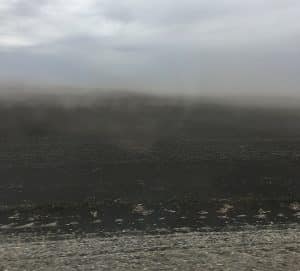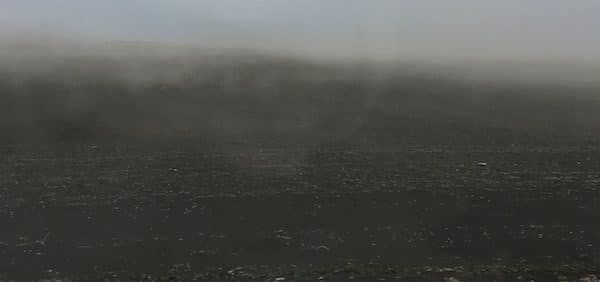1. Wind can bury or blow out seedlings. Will they recover? If buried, they might not. If sand-blasted and sheared off, not likely. READ MORE.

2. Broadcast seeding canola – tips. Are you to the point where broadcasting is the better option than waiting for drill-friendly soil conditions? Here are some tips.
3. Are you registered for canolaPALOOZA? June 20 in Saskatoon, June 22 in Portage la Prairie and June 27 in Lacombe. Registration and information.
4. Have to till? What happens to your carbon offset credit? Alberta Agriculture explains. An excerpt: The new vertical tillage units have caused some confusion. Because there are so many variations when it comes to equipment and settings within the units themselves, vertical tillage is usually treated as a regular tillage unit. (Paul) Jungnitsch recommends checking with the aggregation company to make sure that is what they are doing.
5. More weather resources. See the Prairie-wide weather radar here. Choose 1hr or 3hr loop and press play. Ventusky.com is also useful for seeing local wind speed, gust speed and wind direction.
6. Feeling too stressed? Call for help. A conversation can go a long way. In Saskatchewan, call 1-800-667-4442. Alberta: 1-877-303-2642 Manitoba: 1-866-367-3276 (Monday to Friday 10 AM to 9 PM) and 1-888-322-3019 after hours. READ MORE. Also try hereforfarmers.com.
7. How does anhydrous ammonia perform in too wet or too dry conditions? The Canola Encyclopedia and this Canola Watch article can help. The key to reduce losses is make sure the band is sealed. In the spring rush, please take time to be careful with NH3.
8. Want to measure nitrogen losses? Try a dositube. Here are some instructions: Dositube instructions If you want to get some dositubes, CCC agronomy specialists can help.
9. Wondering about blackleg? Read the new “Blackleg in Western Canada” factsheet or visit blackleg.ca.
10. Spring frost? We sent out an alert last Friday for areas that had a pretty severe and long-lasting frost the night before. The key message: Take a few days to assess the situation before deciding on what to do. Read the alert.

